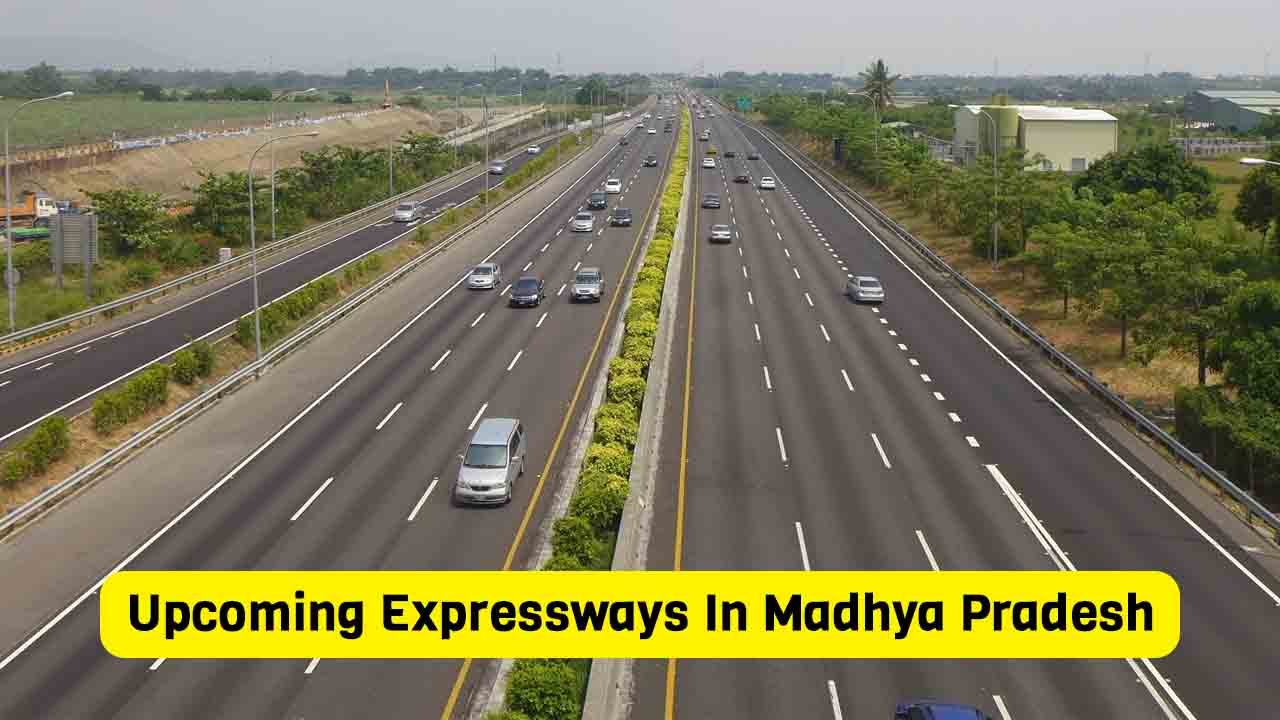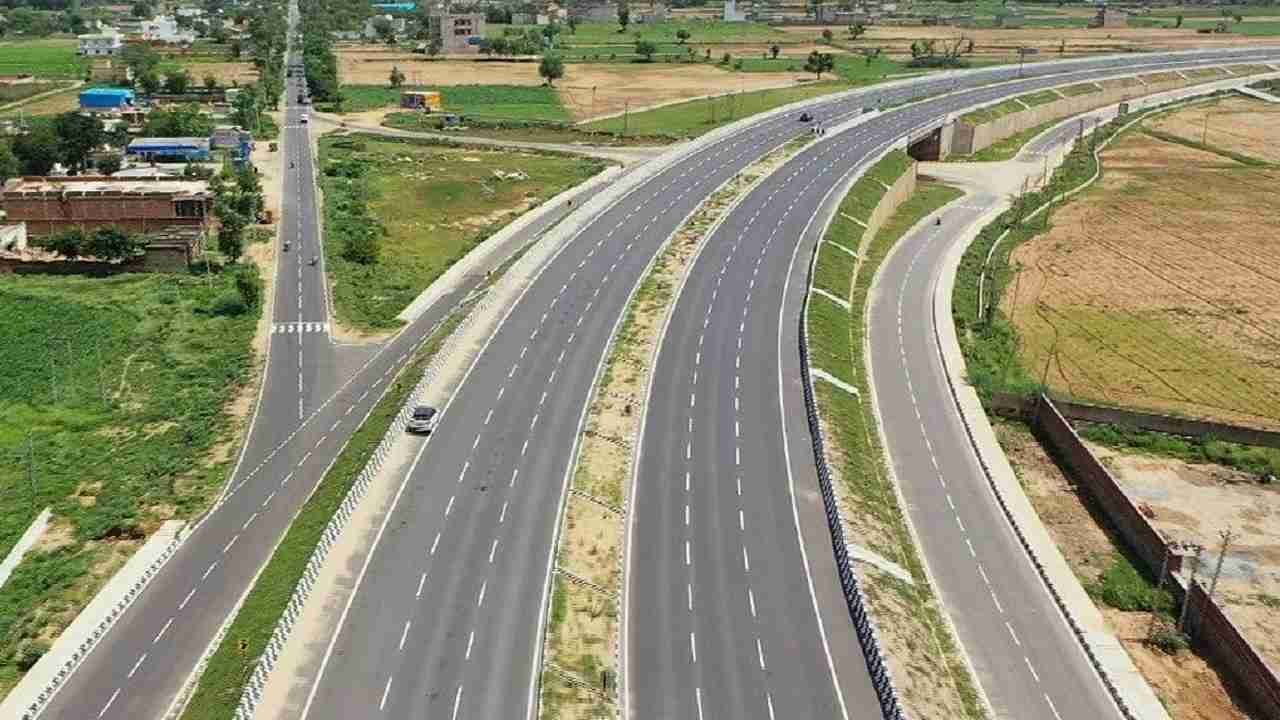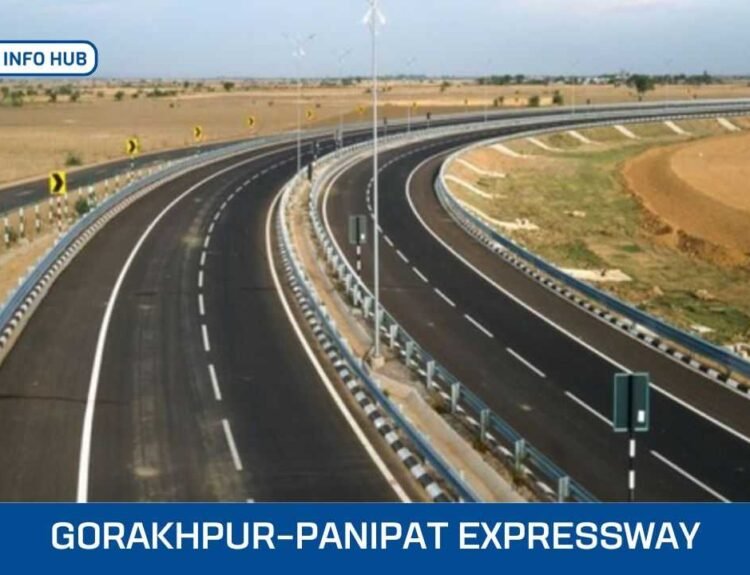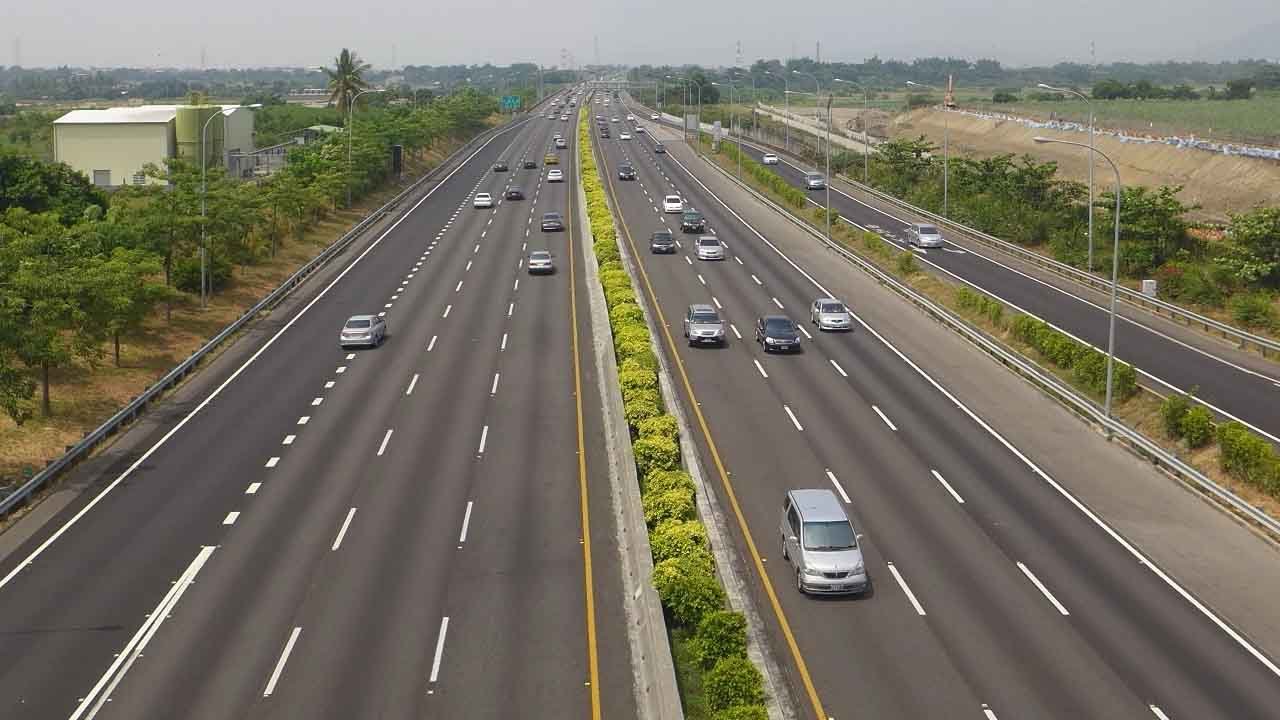One of India’s most ambitious infrastructure projects is the Amritsar-Jamnagar Expressway, which aims to transform connectivity between the northern and western parts of the country. This expressway, which covers multiple states, reduces travel time as well as boosts economic activity. Let’s know its history, impact on the economy, and future prospects.
Table of Contents
- 1 Amritsar Jamnagar Expressway Overview
- 2 About Amritsar Jamnagar Expressway
- 3 Amritsar Jamnagar Expressway Route
- 4 Amritsar Jamnagar Expressway Progress
- 5 Amritsar Jamnagar Expressway Specifications
- 6 Amritsar Jamnagar Expressway Project Sections
- 7 Amritsar Jamnagar Expressway Latest Updates
- 8 Significance of the Amritsar-Jamnagar Expressway
Amritsar Jamnagar Expressway Overview
- Length: 1,256.95 km
- Lanes: 6
- Cost: ₹80,000 crores
- Starting Point: Tibba, Kapurthala, Punjab
- Ending Point: Jamnagar, Gujarat
- Completion time: December 2025
About Amritsar Jamnagar Expressway
According to NHAI, the Amritsar-Jamnagar Expressway will be approximately 1257 km long. The construction of this expressway is going on fast, and about 85 percent construction work has been completed. It is targeted to be completed by December 2025.
At present, people have to travel about 1516 km to go from Amritsar to Jamnagar. It takes about 23 to 24 hours to cover this distance, but after the construction of the Amritsar Jamnagar Expressway, the distance from Amritsar to Kandla Port will be reduced by about 216 km. Also, due to the high-speed corridor, the journey will take only 13 hours.
The Amritsar-Jamnagar Expressway is special because it will also be linked to the Delhi-Amritsar-Katra Expressway. Due to this, the drivers will be able to go towards Delhi and Kashmir. For this, Amritsar-Kapurthala Junction can be made.
Currently under construction, this expressway is being developed under the Bharatmala Project. Also known as the Amritsar Jamnagar Economic Corridor (EC-3), this comprehensive expressway will be the first expressway in India to connect the three major oil refineries of Bathinda, Barmer, and Jamnagar. Also, the distance between Ambala and Amritsar has been reduced to a few minutes.
Amritsar Jamnagar Expressway Route
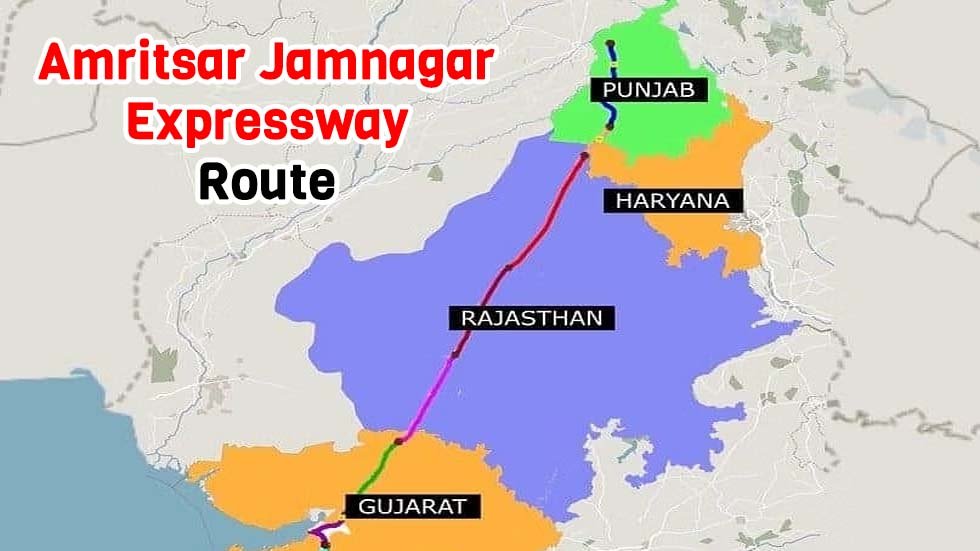
It will start from Tibba village in Kapurthala, Punjab, on the Delhi-Amritsar-Katra Expressway (NE-5A) and end near Bathinda, Punjab-Haryana border on NH-54. NHAI again planned to convert the Tibba-Moga-Bathinda Expressway into a greenfield expressway. Then it will enter the state of Haryana.
It will be entirely in the Sirsa district, and its access will not be controlled in Haryana. After reaching Dabwali Mandi, it will come out at Chautala village on the Haryana-Rajasthan border.
It will enter Rajasthan from Sangaria town in Hanumangarh district. Before exiting Rajasthan, it will pass through Bikaner, Jodhpur, and Barmer districts.
In Gujarat, it will reach Vantdau in Banaskantha, then run through the Patan district. From there, the existing national expressway network extends to Kutch and Morbi before terminating at Jamnagar.
Amritsar Jamnagar Expressway Progress
About 85 percent of the construction work of the Amritsar Jamnagar Expressway, being built between Amritsar in Punjab and Jamnagar in Gujarat, has been completed. This expressway is expected to fully start in December 2025. After this, the travel time between these two major cities will be reduced by 10 hours. Also, there will be better connectivity between the four states.
The Amritsar-Jamnagar Expressway is ready to connect with the Ludhiana-Bathinda-Ajmer Expressway, which is an important part of the Pathankot-Ajmer Economic Corridor. This Bathinda Junction will boost economic activities along the corridor and enhance regional connectivity.
This ambitious plan began the construction of expressways in Haryana and Rajasthan in 2019. Notably, the portion of the Rajasthan Expressway, from Jakhrawali in Hanumangarh district to Khetlawas in Jalore district, has already been completed. This section was inaugurated by Prime Minister Narendra Modi on July 8, 2023, marking an important step in the development of the expressway.
The remaining sections of the expressway are expected to be completed by December 2025. This critical infrastructure project aims to enhance connectivity to benefit travelers and the regional economy.
The under-construction Amritsar-Jamnagar Expressway will not only improve transportation facilities but will also create more opportunities for trade, commerce, and connectivity on its route. It is connected to the Ludhiana-Bathinda-Ajmer Expressway and the Pathankot-Ajmer Economic Corridor, making it an important component in the infrastructure network of the region.
Amritsar Jamnagar Expressway Specifications
The speed of vehicles on the expressway will be 100 km.
This expressway will connect major cities of Punjab, Haryana, Rajasthan, and Gujarat like Amritsar, Bathinda, Moga, Hanumangarh, Suratgarh, Bikaner, Nagaur, Jodhpur, Barmer, and Jamnagar.
5 railway over bridges, 20 river bridges, 26 interchanges, 55 vehicle underpasses, and 311 small vehicle underpasses are being constructed on this expressway.
This expressway will be equipped with a high-tech traffic control system. On this, CCTV cameras and emergency calling booths will be made at every one kilometer.
Apart from this, an electric vehicle charging station will be built within 20 to 30 km. The purpose of the construction of this expressway is to provide fast connectivity and to improve tourism, as well as to increase trade between the states.
Amritsar Jamnagar Expressway Project Sections
- Section 1: Amritsar-Bathinda Expressway
- Section 2: Bathinda-Sangaria/Chautala section
- Section 3: Sangaria/Chautala-Rasisar Expressway
- Section 4: Rasisar-Deogarh Expressway
- Section 5: Deogarh-Sanchore Expressway
- Section 6: Sanchore – Santalpur Expressway
- Section 7: Santalpur-Malia section
- Section 8: Maliya-Jamnagar section
Amritsar Jamnagar Expressway Latest Updates
The Prime Minister has inaugurated the part of the expressway built from Jakhrawali village in Hanumangarh district to Khetlawas village in Jalore district, which is more than 500 kilometers long.
Significance of the Amritsar-Jamnagar Expressway
Amritsar Jamnagar Expressway stands as a remarkable feat of modern infrastructure, seamlessly connecting the historically significant city of Amritsar to the vibrant city of Jamnagar. This expressway not only facilitates efficient transportation but also enhances connectivity and trade opportunities between the two regions.
- Enhancing Connectivity and Trade Opportunities
The Amritsar-Jamnagar Expressway acts as a vital link, fostering connectivity between Punjab and Gujarat. With its robust road network, this expressway establishes a direct and efficient route for the transportation of goods, promoting trade and economic growth in the region.
Industries in Amritsar and Jamnagar can now enjoy improved accessibility to diverse markets, enabling them to expand their reach and thrive in a competitive landscape.
- Boosting Regional Development and Tourism
The expressway plays a pivotal role in boosting regional development by connecting several cities and towns along its route. This connectivity unlocks the potential for socio-economic progress, attracting investments and fostering growth in industries such as manufacturing, agriculture, and tourism.
Amritsar, known for its rich cultural heritage and spiritual significance, witnesses an increase in tourism due to the improved accessibility brought about by the expressway. Visitors can now easily explore iconic landmarks like the Golden Temple, Jallianwala Bagh, and Wagah Border, immersing themselves in the city’s vibrant history and tradition.
Similarly, Jamnagar, with its captivating palaces and vibrant bazaars, becomes more accessible to travelers, contributing to the growth of its tourism industry.
- Improving Transportation Infrastructure
The Amritsar-Jamnagar Expressway greatly improves the overall transportation infrastructure in the region. With its well-constructed lanes and modern amenities, the expressway ensures a smooth and safe journey for commuters and goods alike.
The reduced travel time and enhanced connectivity lead to increased efficiency in the transportation of goods, positively impacting industries and supporting economic growth.
Furthermore, the expressway alleviates congestion on existing road networks, resulting in a more organized and streamlined traffic flow. This improvement in traffic management not only reduces travel time but also enhances road safety, making the journey more secure for all users.
The Amritsar-Jamnagar Expressway stands as a testament to India’s commitment to infrastructure development and connectivity. By bridging the gap between Amritsar and Jamnagar, this expressway paves the way for enhanced trade opportunities, regional development, and flourishing tourism.
As a key driver of economic growth, it is set to unlock the immense potential of both cities and the surrounding regions. This Expressway is more than just a road; it is a pathway to progress and prosperity, connecting two vibrant cities with unparalleled efficiency.
Over the past few decades, there has been a rapid increase in vehicular traffic on Indian roads, resulting in increased congestion and longer travel times.
The ambitious Amritsar Jamnagar Expressway is a strong initiative by the government to provide better connectivity between central and northern India, ultimately boosting import and export activities.
Additionally, the Expressway is being built close to the Indian and Pakistani borders, which will eventually enable seamless connectivity between military bases close to the borders.
In addition, the expressway’s connectivity with three major refineries of Bathinda, Barmer, and Jamnagar will result in industrialization, commercial expansion, and socio-economic development of the surrounding areas.
Recommended:
- Ahmedabad Dholera Expressway
- Delhi-Mumbai Expressway
- Tharad Ahmedabad Expressway
- Ahmedabad Vadodara Expressway
- Surat Chennai Expressway


